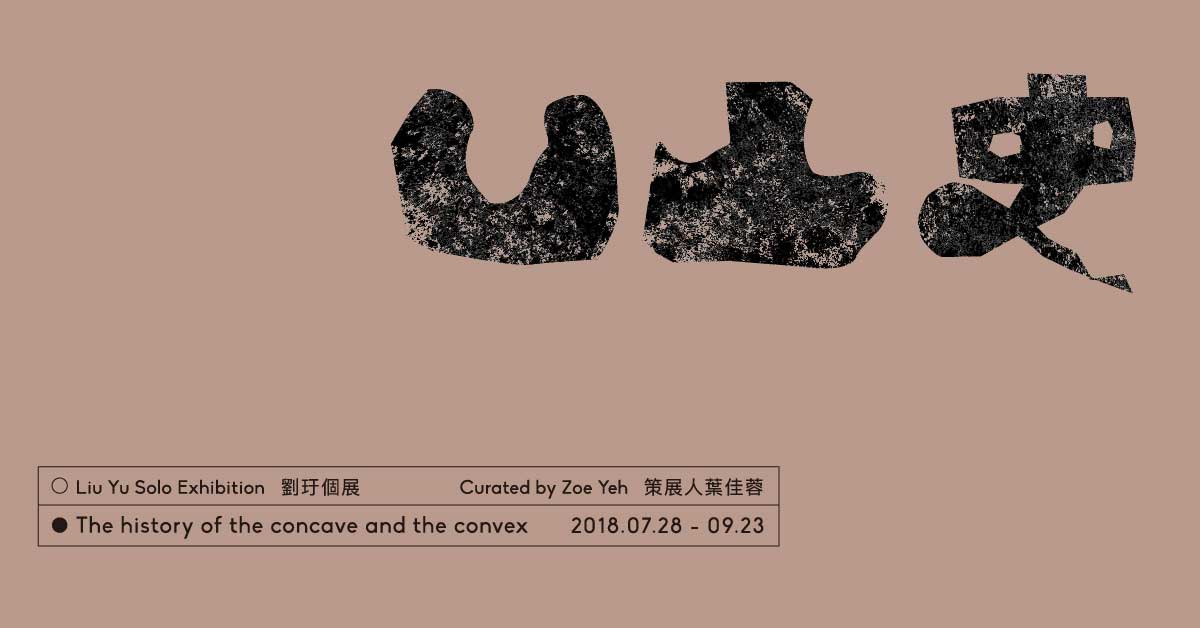BACK
The History of the Concave and the Convex-LIU Yu Solo Exhibition

The solo exhibition of Liu Yu this time consists of two 3-channel videos, two interview footages, a series of private collections, and a booklet. The exhibition’s narrative embarks from the United States, following the ghost towns left behind by the gold rush in the West in the 19th century, all the way to the rise and fall of the mining settlement in Jinguashi and Jiufen of Taiwan in 20th century. There is a timeline in the exhibition, which is not a chronologically straight line, however. Instead, it is more of a sewing thread in an attempt to connect bits and pieces of memories in the American West and Taiwan. The fragments of these memories are embedded on the minds of the wanderers on the roadside, savages in the mountains, residents remaining in the ghost towns, and the descendants after the village has perished. Liu Yu made efforts capturing these traces that will fade away in time. The booklet in the exhibition is like a book of long footnotes, being not only an information supplement regarding the people, things, and objects in the videos, but a profiling along Liu’s process of creation.
The video The Stone Player filmed a tramp sitting on the beach of Santa Monica, dedicated to the arrangement of the stones in front. Even when the artist approached, trying to have a conversation, there was barely anything that could be called as such. His simple and repetitive behavior demonstrated that these stones in different sizes meant much to him. His dedication is the beginning of all narratives, shedding light to the interrelationship between Man and objects across time. Next, Salvation Mountain, a sophisticated 3-channel video that utilized drones, floor projection, and animations, comes into view. Displaying the enormity of mine pit and the desolation of ghost towns with vast projection on one hand while altering the physical experience of the audience that enter the space with floor projection on the other, the visual effect manifests the immensity of the American continent and implies the former glory the ghost towns used to enjoy, and that although mining can drastically change the landscape, the picture of white snow covers all these man-made traces. There are three figures in the only animation with conversation in the same set of works: a pioneer, a bus traveler, and a drone. These three movers from different times and with different agendas reveal some clues to the people come and go on these territories, so as to allow audience to get close to the history, whereas the ghostly conversation of these three voices foreshadows the films that follow.
There comes the section where the story of Jinguashi and Jiufen is told. Nameless combines gauze screen projection and two screens, subtly echoing the worlds of yin and yang in the film via the textures of the mediums being projected onto. The abandoned mine pit at Dacukeng is not as desolate as the ghost towns in the American West. There is still a mountain savage nicknamed as village head in the abandoned building watching over, and the apparitions guarding the pit will summon their subjects to pay respects from time to time. Compared to the confessions made by the three fictitious characters in the animation earlier, the figures and audience of Nameless and Notes on the Stones belong to the same space-time. Their obsessions with “object” are more authentic. Through the collection and the interpretation of the work, people’s emotions and projections toward objects are vividly exposed. Such emotional projection becomes yet another clue in the exhibition: despite of the difference in the things pursued, people prone to have hope for the good things in their own imagination. Be it the people ventured into the wild west for gold over a hundred years ago or the laborers leaving their home behind, fighting for a higher pay, or even the common folks nowadays that collect stones and drift woods, the forms may change on the outside every now and then, but the idea of “trying to possess” remains the same on the inside.
The Chinese characters for “Concave” and “Convex” in the title The History of the Concave and the Convex appear in opposite shapes. Yet, they are interrelated or even complementary to each other, illustrating the tight connection in between these seemingly unrelated locations, people, events, and objects. The behavior of humans bestows unique meaning upon certain ores in the Nature. Such act of bestowing gives rise to pursuits of all sorts. The History of Concave and Convex is the very project that unfolds around these “traces” left behind by the pursuits. It is an observation on sections of time from diverse angles as well as a skeptical inquiry into those taken for granted.
Dates: 2018.07.28-09.23

Salvation Mountain
Salvation Mountain
LIU Yu

Salvation Mountain
Salvation Mountain
LIU Yu

Notes on Stones
Notes on Stones
LIU Yu

Notes on Stones
Notes on Stones
LIU Yu

Notes on Stones
Notes on Stones
LIU Yu

Salvation Mountain
Salvation Mountain
LIU Yu

